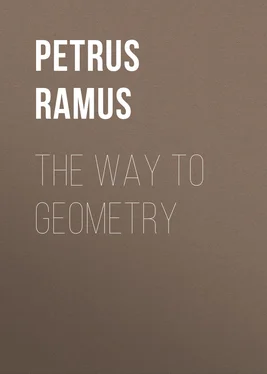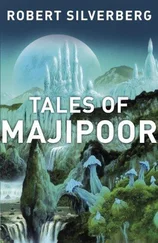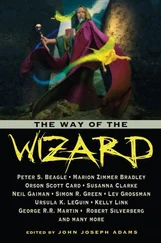Petrus Ramus - The Way To Geometry
Здесь есть возможность читать онлайн «Petrus Ramus - The Way To Geometry» — ознакомительный отрывок электронной книги совершенно бесплатно, а после прочтения отрывка купить полную версию. В некоторых случаях можно слушать аудио, скачать через торрент в формате fb2 и присутствует краткое содержание. Жанр: foreign_edu, Математика, на английском языке. Описание произведения, (предисловие) а так же отзывы посетителей доступны на портале библиотеки ЛибКат.
- Название:The Way To Geometry
- Автор:
- Жанр:
- Год:неизвестен
- ISBN:нет данных
- Рейтинг книги:5 / 5. Голосов: 1
-
Избранное:Добавить в избранное
- Отзывы:
-
Ваша оценка:
- 100
- 1
- 2
- 3
- 4
- 5
The Way To Geometry: краткое содержание, описание и аннотация
Предлагаем к чтению аннотацию, описание, краткое содержание или предисловие (зависит от того, что написал сам автор книги «The Way To Geometry»). Если вы не нашли необходимую информацию о книге — напишите в комментариях, мы постараемся отыскать её.
The Way To Geometry — читать онлайн ознакомительный отрывок
Ниже представлен текст книги, разбитый по страницам. Система сохранения места последней прочитанной страницы, позволяет с удобством читать онлайн бесплатно книгу «The Way To Geometry», без необходимости каждый раз заново искать на чём Вы остановились. Поставьте закладку, и сможете в любой момент перейти на страницу, на которой закончили чтение.
Интервал:
Закладка:
Our Authour, in the declaration of the Elements hath many passages, which in our judgement doe not make so much for the understanding of the matter in hand, as for the defence of the method here used, against Aristotle, Euclide, Proclus, and others, which we have therfore wholly omitted. Some other things, which in our opinion, might in some respect illustrate any particular in this businesse, we have here and there inserted. Out of the learned Finkius's Geometria Rotundi, Wee have added to the fifth Booke certaine Propositions with their Consectaries out of Ptolomi's Almagest. The painfull and diligent Rod. Snellius out of the Lectures and Annotations of B. Salignacus, I. Tho. Freigius, and others, hath illustrated and altered here and there some few things .
THE FIRST BOOKE OF Peter Ramus's Geometry, Which is of a Magnitude
1. Geometry is the Art of measuring well .
The end or scope of Geometry is to measure well: Therefore it is defined of the end, as generally all other Arts are. To measure well therefore is to consider the nature and affections of every thing that is to be measured: To compare such like things one with another: And to understand their reason and proportion and similitude. For all that is to measure well, whether it bee that by Congruency and application of some assigned measure: Or by Multiplication of the termes or bounds: Or by Division of the product made by multiplication: Or by any other way whatsoever the affection of the thing to be measured be considered.
But this end of Geometry will appeare much more beautifull and glorious in the use and geometricall workes and practise then by precepts, when thou shalt observe Astronomers, Geographers, Land-meaters, Sea-men, Enginers, Architects, Carpenters, Painters, and Carvers, in the description and measuring of the Starres, Countries, Lands, Engins, Seas, Buildings, Pictures, and Statues or Images to use the helpe of no other art but of Geometry. Wherefore here the name of this art commeth farre short of the thing meant by it. (For Geometria , made of Gè , which in the Greeke language signifieth the Earth; and Métron , a measure, importeth no more, but as one would say Land-measuring . And Geometra , is but Agrimensor , A land-meter: or as Tully calleth him Decempedator , a Pole-man: or as Plautus , Finitor , a Marke-man.) when as this Art teacheth not only how to measure the Land or the Earth, but the Water, and the Aire, yea and the whole World too, and in it all Bodies, Surfaces, Lines, and whatsoever else is to bee measured.
Now a Measure , as Aristotle doth determine it, in every thing to be measured, is some small thing conceived and set out by the measurer; and of the Geometers it is called Mensura famosa , a knowne measure. Which kinde of measures, were at first, as Vitruvius and Herodo teache us, taken from mans body: whereupon Protagoras sayd, That man was the measure of all things , which speech of his, Saint Iohn , Apoc. 21. 17. doth seeme to approve. True it is, that beside those, there are some other sorts of measures, especially greater ones, taken from other things, yet all of them generally made and defined by those. And because the stature and bignesse of men is greater in some places, then it is ordinarily in others, therefore the measures taken from them are greater in some countries, then they are in others. Behold here a catalogue, and description of such as are commonly either used amongst us, or some times mentioned in our stories and other bookes translated into our English tongue.
Granum hordei , a Barley corne, like as a wheat corne in weights, is no kinde of measure, but is quiddam minimum in mensura , some least thing in a measure, whereof it is, as it were, made, and whereby it is rectified.
Digitus , a Finger breadth, conteineth 2. barly cornes length, or foure layd side to side:
Pollex , a Thumbe breadth; called otherwise Vncia , an ynch, 3. barley cornes in length:
Palmus , or Palmus minor , an Handbreadth, 4. fingers, or 3. ynches.
Spithama , or Palmus major , a Span, 3. hands breadth, or 9. ynches.
Cubitus , a Cubit, halfe a yard, from the elbow to the top of the middle finger, 6. hands breadth, or two spannes.
Ulna , from the top of the shoulder or arme-hole, to the top of the middle finger. It is two folde; A yard and an Elne. A yard , containeth 2. cubites, or 3. foote: An Elne , one yard and a quarter, or 2. cubites and ½.
Pes , a Foot, 4. hands breadth, or twelve ynches.
Gradus , or Passus minor , a Steppe, two foote and an halfe.
Passus , or Passus major , a Stride, two steppes, or five foote.
Pertica , a Pertch, Pole, Rod or Lugge, 5. yardes and an halfe.
Stadium , a Furlong; after the Romans, 125. pases: the English, 40. rod.
Milliare , or Milliarium , that is mille passus , 1000. passes, or 8. furlongs.
Leuca , a League, 2. miles: used by the French, spaniards, and seamen.
Parasanga , about 4. miles: a Persian, & common Dutch mile; 30. furlongs.
Schœnos , 40. furlongs: an Egyptian, or swedland mile.
Now for a confirmation of that which hath beene saide, heare the words of the Statute.
It is ordained, That 3. graines of Barley, dry and round, do make an Ynch: 12. ynches do make a Foote: 3. foote do make a Yard: 5. yardes and ½ doe make a Perch: And 40. perches in length, and 4. in breadth, doe make an Aker: 33. Edwar. 1. De terris mensurandis: & De compositione ulnarum & Perticarum .
Item, Bee it enacted by the authority aforesaid; That a Mile shall be taken and reckoned in this manner, and no otherwise; That is to say, a Mile to containe 8. furlongs: And every Furlong to containe 40. lugges or poles: And every Lugge or Pole to containe 16. foote and ½. 25. Eliza. An Act for restraint of new building, &c.
These, as I said, are according to diverse countries, where they are used, much different one from another: which difference, in my judgment; ariseth especially out of the difference of the Foote, by which generally they are all made, whether they be greater of lesser. For the Hand being as before hath beene taught, the fourth part of the foot whether greater or lesser: And the Ynch, the third part of the hand, whether greater or lesser.
Item , the Yard, containing 3. foote, whether greater or lesser: And the Rodde 5. yardes and ½, whether greater or lesser, and so forth of the rest; It must needes follow, that the Foote beeing in some places greater then it is in other some, these measures, the Hand, I meane, the Ynch, the Yard, the Rod, must needes be greater or lesser in some places then they are in other. Of this diversity therefore, and difference of the foot, in forreine countries, as farre as mine intelligence will informe me, because the place doth invite me, I will here adde these few lines following. For of the rest, because they are of more speciall use, I will God willing, as just occasion shall be administred, speake more plentifully hereafter.
Of this argument divers men have written somewhat, more or lesse: But none to my knowledge, more copiously and curiously, then Iames Capell , a Frenchman, and the learned Willebrand , Snellius , of Leiden in Holland, for they have compared, and that very diligently, many and sundry kinds of these measures one with another. The first as you may see in his treatise De mensuris intervallorum describeth these eleven following: of which the greatest is Pes Babylonius , the Babylonian foote; the least, Pes Toletanus , the foote used about Toledo in Spaine: And the meane betweene both, Pes Atticus , that used about Athens in Greece. For they are one unto another as 20. 15. and 12. are one unto another. Therefore if the Spanish foote, being the least, be devided into 12. ynches, and every inch againe into 10. partes, and so the whole foote into 120. the Atticke foote shall containe of those parts 150. and the Babylonian , 200. To this Atticke foote, of all other, doth ours come the neerest: For our English foote comprehendeth almost 152. such parts.
Читать дальшеИнтервал:
Закладка:
Похожие книги на «The Way To Geometry»
Представляем Вашему вниманию похожие книги на «The Way To Geometry» списком для выбора. Мы отобрали схожую по названию и смыслу литературу в надежде предоставить читателям больше вариантов отыскать новые, интересные, ещё непрочитанные произведения.
Обсуждение, отзывы о книге «The Way To Geometry» и просто собственные мнения читателей. Оставьте ваши комментарии, напишите, что Вы думаете о произведении, его смысле или главных героях. Укажите что конкретно понравилось, а что нет, и почему Вы так считаете.












